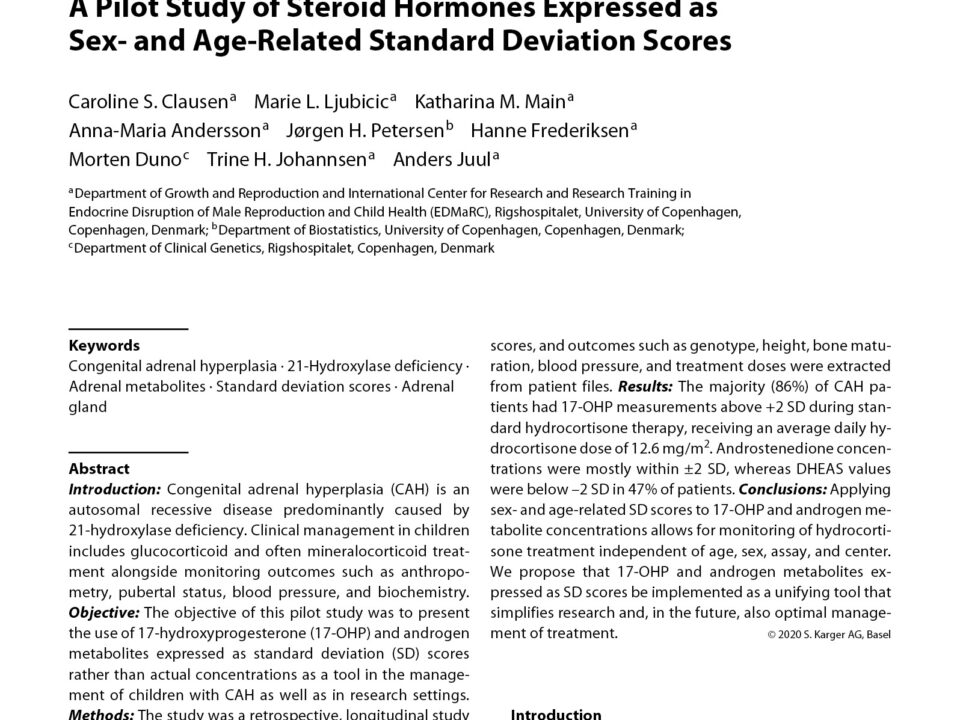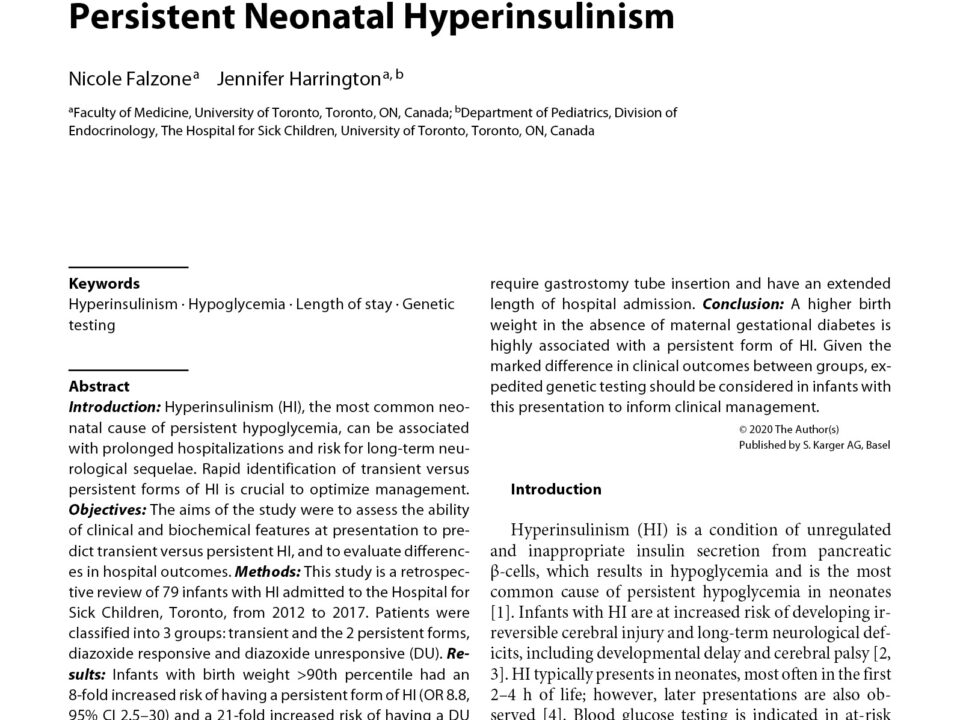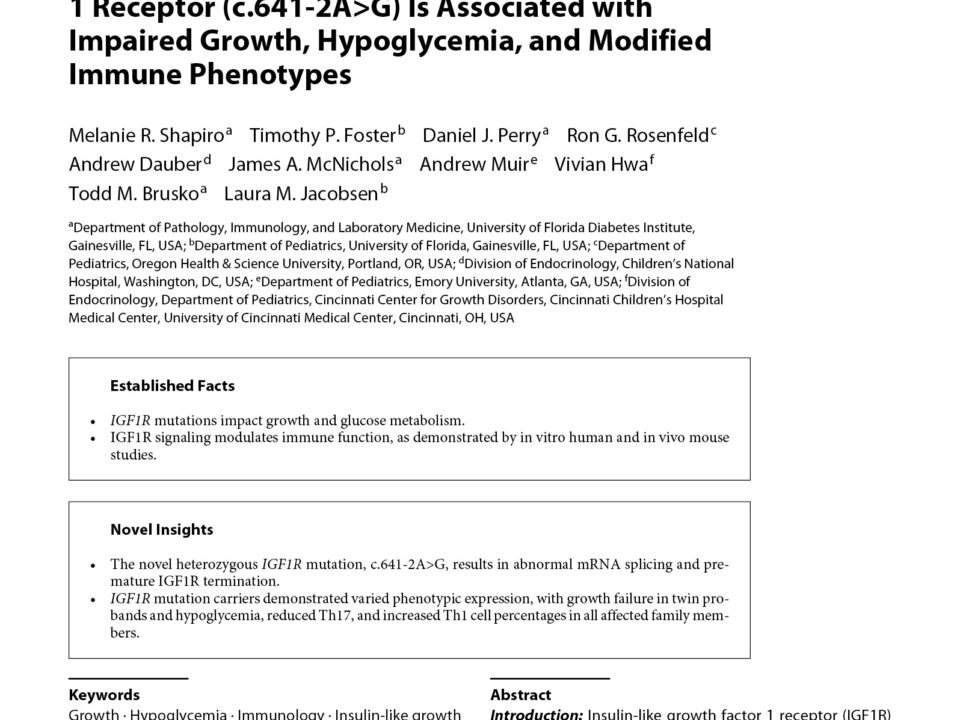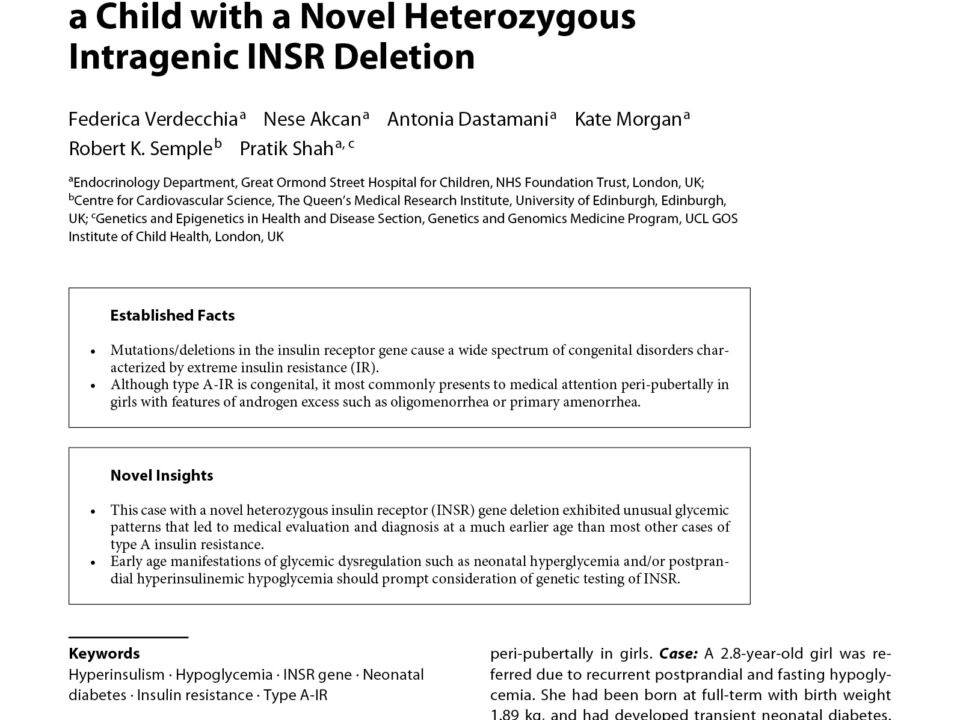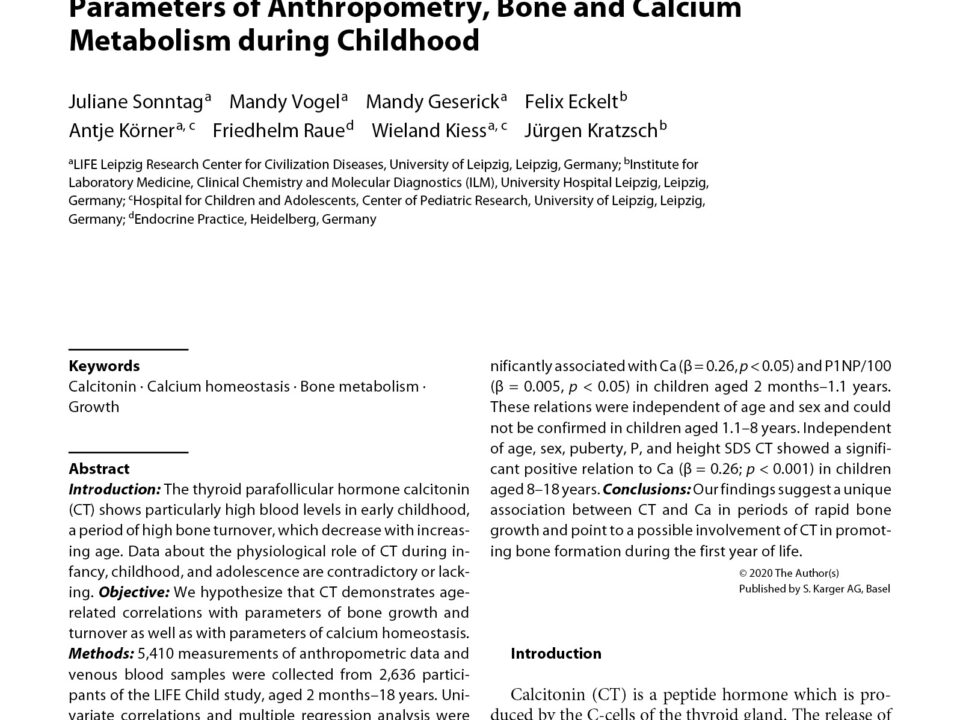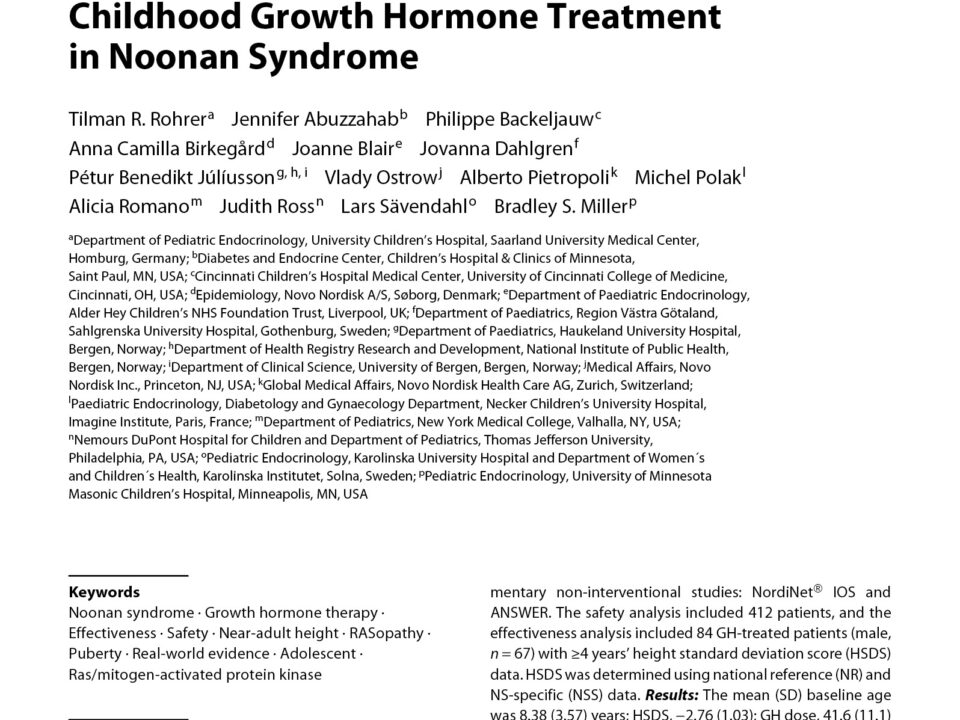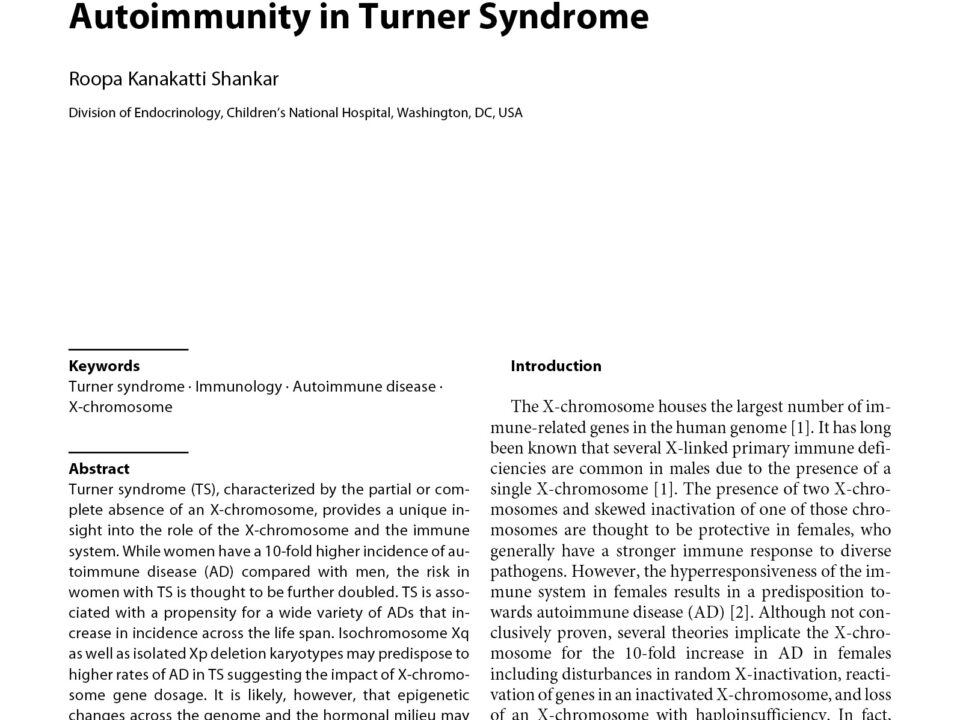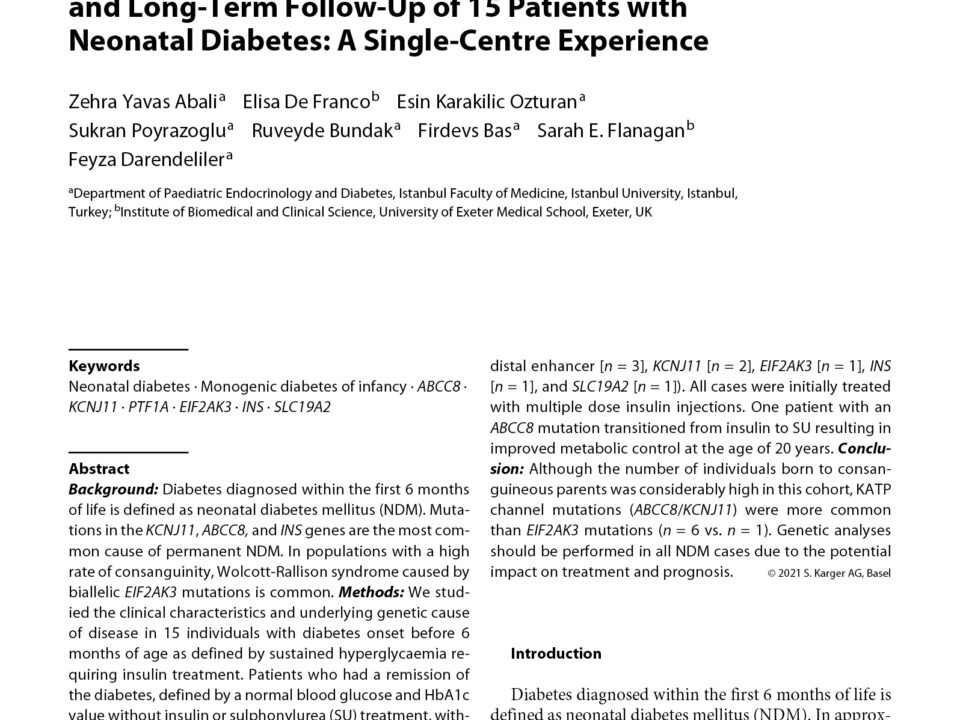December 13, 2022
December 13, 2022
Background: Pediatric endocrine practices had to rapidly transition to telemedicine care at the onset of the novel coronavirus disease 2019 (COVID-19) pandemic. For many, it was an abrupt introduction to providing virtual healthcare, with concerns related to quality of patient care, patient privacy, productivity, and compensation, as workflows had to change. Summary: The review summarizes the common adaptations for telemedicine during the pandemic with respect to the practice of pediatric endocrinology and discusses the benefits and potential barriers to telemedicine. Key Messages: With adjustments to practice, telemedicine has allowed providers to deliver care to their patients during the COVID-19 pandemic. The broader implementation of telemedicine in pediatric endocrinology practice has the potential for expanding patient access. Research assessing the impact of telemedicine on patient care outcomes in those with pediatric endocrinology conditions will be necessary to justify its continued use beyond the COVID-19 pandemic.
December 13, 2022
Introduction: Hyperinsulinism (HI), the most common neonatal cause of persistent hypoglycemia, can be associated with prolonged hospitalizations and risk for long-term neurological sequelae. Rapid identification of transient versus persistent forms of HI is crucial to optimize management. Objectives: The aims of the study were to assess the ability of clinical and biochemical features at presentation to predict transient versus persistent HI, and to evaluate differences in hospital outcomes. Methods: This study is a retrospective review of 79 infants with HI admitted to the Hospital for Sick Children, Toronto, from 2012 to 2017. Patients were classified into 3 groups: transient and the 2 persistent forms, diazoxide responsive and diazoxide unresponsive (DU). Results: Infants with birth weight >90th percentile had an 8-fold increased risk of having a persistent form of HI (OR 8.8, 95% CI 2.5–30) and a 21-fold increased risk of having a DU form of HI (OR 21.1, 95% CI 4.9–91.8). The majority of children with transient HI and a birth weight >90th percentile were born to mothers with gestational diabetes. There were no other useful clinical or biochemical presenting features that differentiated the groups. There were significant differences in outcome measures, with the DU children more likely to require gastrostomy tube insertion and have an extended length of hospital admission. Conclusion: A higher birth weight in the absence of maternal gestational diabetes is highly associated with a persistent form of HI. Given the marked difference in clinical outcomes between groups, expedited genetic testing should be considered in infants with this presentation to inform clinical management.
December 13, 2022
Growth and glucose homeostasis are intricately regulated by hormonal insulin and insulin-like growth factor (IGF) signaling via tyrosine kinase receptors, including the IGF1 receptor (IGF1R) [1]. The IGF1R gene is found on chromosome 15q26.3 and consists of 21 exons, encoding for an (αβ)2 homodimer with homology to the insulin receptor (IR) [2]. Mutations in IGF1R have been reported to affect ligand binding and/or decrease surface IGF1R expression [2]. Prior reports of IGF1R mutations are commonly heterozygous [3-15], with only 2 compound heterozygous [16, 17] and 2 hypomorphic homozygous mutations [14, 18] reported to date. Homozygous loss-of-function mutations are likely lethal, as observed in mouse studies [19].
December 13, 2022
Background: Mutations of the insulin receptor (INSR) gene lead to a wide spectrum of inherited insulin resistance (IR) syndromes. Among these, type A-IR, usually caused by dominant negative INSR mutations, generally presents peri-pubertally in girls. Case: A 2.8-year-old girl was referred due to recurrent postprandial and fasting hypoglycemia. She had been born at full-term with birth weight 1.89 kg, and had developed transient neonatal diabetes. Examination showed satisfactory growth, reduced adipose tissue, acanthosis nigricans, and isolated thelarche. After 12 h of fasting, she developed hypoglycemia (glucose 2.8 mmol/L), with inappropriately raised plasma insulin concentration of 5.4 mU/L and suppressed fatty acids and ketone bodies. Oral glucose tolerance testing showed severely increased plasma insulin concentration (>300 mU/L) with hypoglycemia (glucose 1.6 mmol/L) at 2.5 h. She was initially managed on dietary modifications, cornstarch, and then trialed on acarbose for postprandial hyperinsulinemic hypoglycemia (PPHH) with some response. However, she was noted to have increased frequency of hyperglycemia after a couple of years of treatment. She was then switched to metformin and continued to have dietary carbohydrate modification including cornstarch that improved fasting tolerance, hyperglycemia, and postprandial hypoglycemia. Genetic testing identified heterozygous deletion of the last exon of the INSR gene, exon 22. Conclusion: We present a case of type A-IR, caused by a novel INSR deletion, presenting unusually early with transient neonatal diabetes, followed by episodes of hypoglycemia and hyperglycemia during later childhood. Early life presentations, including neonatal diabetes and PPHH, should lead to consideration of type A-IR.
December 13, 2022
Introduction: The thyroid parafollicular hormone calcitonin (CT) shows particularly high blood levels in early childhood, a period of high bone turnover, which decrease with increasing age. Data about the physiological role of CT during infancy, childhood, and adolescence are contradictory or lacking. Objective: We hypothesize that CT demonstrates age-related correlations with parameters of bone growth and turnover as well as with parameters of calcium homeostasis. Methods: 5,410 measurements of anthropometric data and venous blood samples were collected from 2,636 participants of the LIFE Child study, aged 2 months–18 years. Univariate correlations and multiple regression analysis were performed between serum CT and anthropometric indicators (height standard deviation scores [SDS] and BMI-SDS), markers of calcium (Ca) homeostasis (Ca, parathyroid hormone, 25-OH vitamin D, and phosphate [P]), bone formation (procollagen type 1 N-terminal propeptide [P1NP], osteocalcin), and bone resorption (β-CrossLaps). Results: CT was significantly associated with Ca (β = 0.26, p < 0.05) and P1NP/100 (β = 0.005, p < 0.05) in children aged 2 months–1.1 years. These relations were independent of age and sex and could not be confirmed in children aged 1.1–8 years. Independent of age, sex, puberty, P, and height SDS CT showed a significant positive relation to Ca (β = 0.26; p < 0.001) in children aged 8–18 years. Conclusions: Our findings suggest a unique association between CT and Ca in periods of rapid bone growth and point to a possible involvement of CT in promoting bone formation during the first year of life.
December 13, 2022
Introduction: Few data exist on long-term growth hormone (GH) treatment in patients with Noonan syndrome (NS). Objective: To evaluate the effectiveness and safety of GH treatment in NS in clinical practice. Methods: Height gain, near-adult height (NAH), and safety were assessed in 2 complementary non-interventional studies: NordiNet® IOS and ANSWER. The safety analysis included 412 patients, and the effectiveness analysis included 84 GH-treated patients (male, n = 67) with ≥4 years’ height standard deviation score (HSDS) data. HSDS was determined using national reference (NR) and NS-specific (NSS) data. Results: The mean (SD) baseline age was 8.38 (3.57) years; HSDS, −2.76 (1.03); GH dose, 41.6 (11.1) µg/kg/day. The mean (SD) HSDS increase from baseline (ΔHSDS) was 0.49 (0.37) (first year), 0.79 (0.58) (second year), and 1.01 (0.60) (third year) (NR). The mean (SD) HSDS at year 3 was −1.66 (1.00) (NR; 1.06 [1.12] [NSS]). Twenty-four patients achieved NAH. The mean (SD) NAH SDS (NR) was −1.51 (0.60) (154.90 [3.21] cm) in females and −1.79 (1.09) (165.61 [7.19] cm) in males; 70.8% (17/24) had NAH SDS ≥ −2. Adverse drug reactions and GH-unrelated serious adverse events (n = 34) were reported in 22/412 (5.3%) patients. Four neoplasms and 3 cases of scoliosis were reported; no cardiovascular adverse events occurred. Conclusions: GH-treated children with NS achieved substantial height gain during the first 3 years of follow-up. Overall, 24 patients achieved NAH, with 70.8% having NAH SDS ≥ –2. There was no evidence to support a higher prevalence of neoplasm, or cardiac or other comorbidities.
December 13, 2022
Turner syndrome (TS), characterized by the partial or complete absence of an X-chromosome, provides a unique insight into the role of the X-chromosome and the immune system. While women have a 10-fold higher incidence of autoimmune disease (AD) compared with men, the risk in women with TS is thought to be further doubled. TS is associated with a propensity for a wide variety of ADs that increase in incidence across the life span. Isochromosome Xq as well as isolated Xp deletion karyotypes may predispose to higher rates of AD in TS suggesting the impact of X-chromosome gene dosage. It is likely, however, that epigenetic changes across the genome and the hormonal milieu may also have a profound impact on the immune profile in TS. This review explores the immune phenotype and the spectrum of ADs in TS. Genotype-phenotype correlations are presented with a brief overview of the genetic and hormonal underpinnings.
December 13, 2022
Background: Diabetes diagnosed within the first 6 months of life is defined as neonatal diabetes mellitus (NDM). Mutations in the KCNJ11, ABCC8, and INS genes are the most common cause of permanent NDM. In populations with a high rate of consanguinity, Wolcott-Rallison syndrome caused by biallelic EIF2AK3 mutations is common. Methods: We studied the clinical characteristics and underlying genetic cause of disease in 15 individuals with diabetes onset before 6 months of age as defined by sustained hyperglycaemia requiring insulin treatment. Patients who had a remission of the diabetes, defined by a normal blood glucose and HbA1c value without insulin or sulphonylurea (SU) treatment, within the first 18 months of life were classified as having transient NDM (TNDM). Results: We report 15 patients with NDM from 14 unrelated families, including 10 with reported parental consanguinity. 1/15 patients had a remission of diabetes, leading to a diagnosis of TNDM. Mutations were detected in 80% (n = 12/15) of the cohort (ABCC8 [n = 4], PTF1A-distal enhancer [n = 3], KCNJ11 [n = 2], EIF2AK3 [n = 1], INS [n = 1], and SLC19A2 [n = 1]). All cases were initially treated with multiple dose insulin injections. One patient with an ABCC8 mutation transitioned from insulin to SU resulting in improved metabolic control at the age of 20 years. Conclusion: Although the number of individuals born to consanguineous parents was considerably high in this cohort, KATP channel mutations (ABCC8/KCNJ11) were more common than EIF2AK3 mutations (n = 6 vs. n = 1). Genetic analyses should be performed in all NDM cases due to the potential impact on treatment and prognosis.
